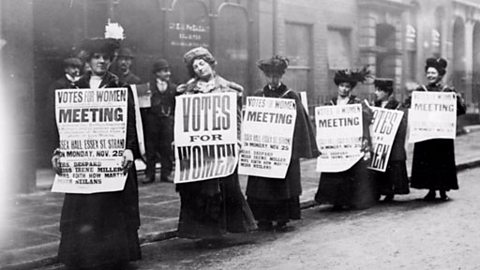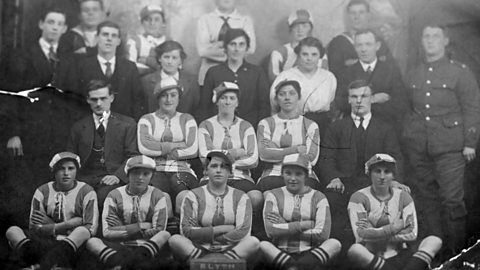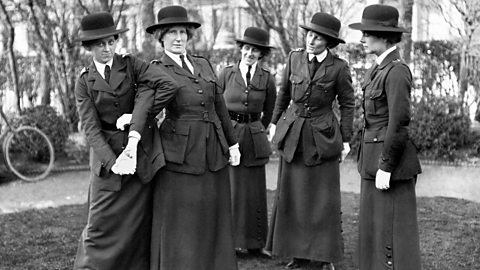Video summary
Kate Adie shows how women won the right to vote in 1918.
David Lloyd George, as the newly appointed Prime Minister, was a sympathetic ear towards the Suffragetteãs campaign for equality; as many of the voters were away at war it allowed women to state their case.
The Representation Act is explained, while the Ladies Gallery in Parliament is shown as an illustrative symbol of the oppression that women faced.
Teacher Notes
Could be used to begin a concluding debate or research about how far women had really progressed in society during World War One.
This clip will be relevant for teaching History at KS3, KS4/GCSE, in England and Wales and Northern Ireland.
Also at Third Level, Fourth Level, National 4 and National 5 in Scotland.
This topic appears in OCR, Edexcel, AQA, WJEC, CCEA GCSE and SQA.
How the suffragette movement changed at the start of WW1. video
Kate Adie examines how the suffragette movement shifted focus at the outbreak of World War One.

How women joined the war effort in World War One. video
Kate Adie explores how women of all classes joined the workforce overseas and on the 91ààݘ Front.

How women's football thrived in World War One. video
Kate Adie explains how women's football teams, such as The Blyth Spartans and star player Bella Raey, thrived in WW1.

Women in medicine and health in World War One. video
Kate Adie explains how women staffed the medical services and broke down social attitudes during WW1.

The rise of the girls' night and the first women's police force in WW1. video
Kate Adie explains the story of Margaret Damer Dawson, the Women's Police Service and the rise of the girls' night out in WW1.

ä»